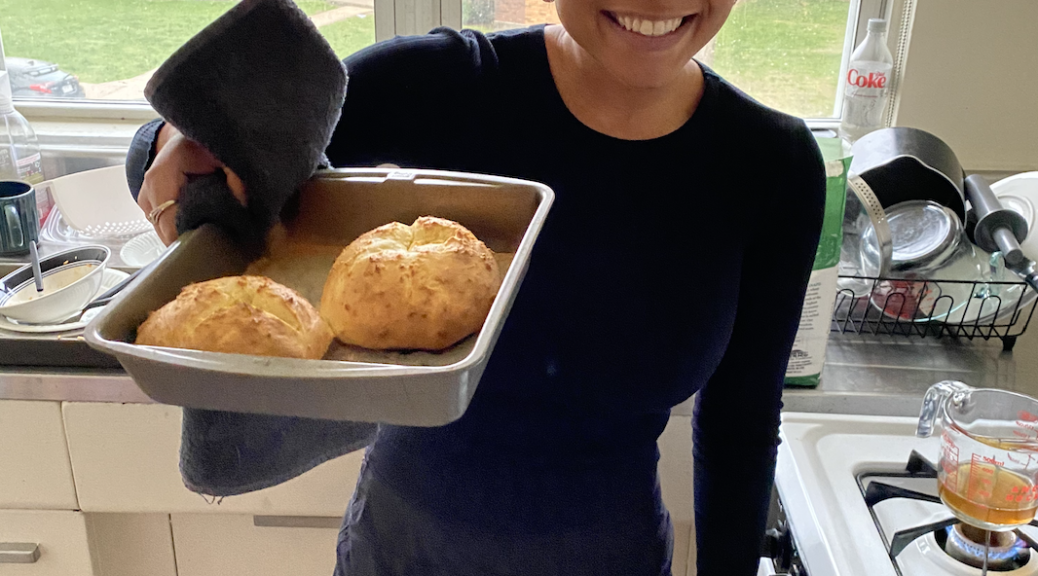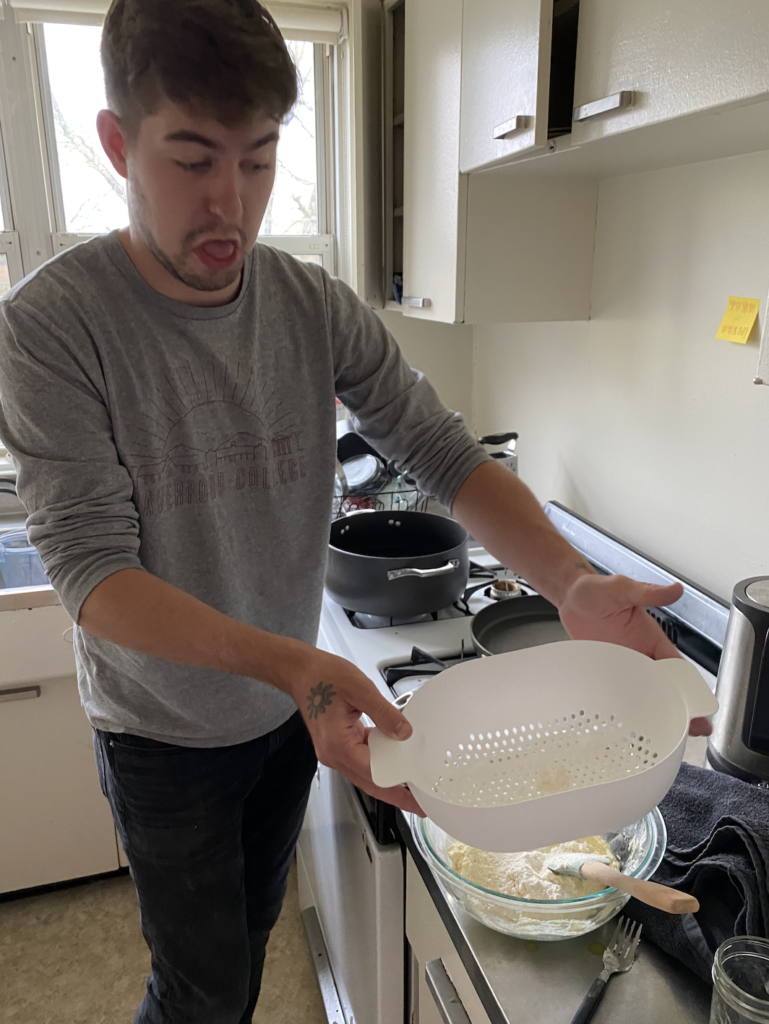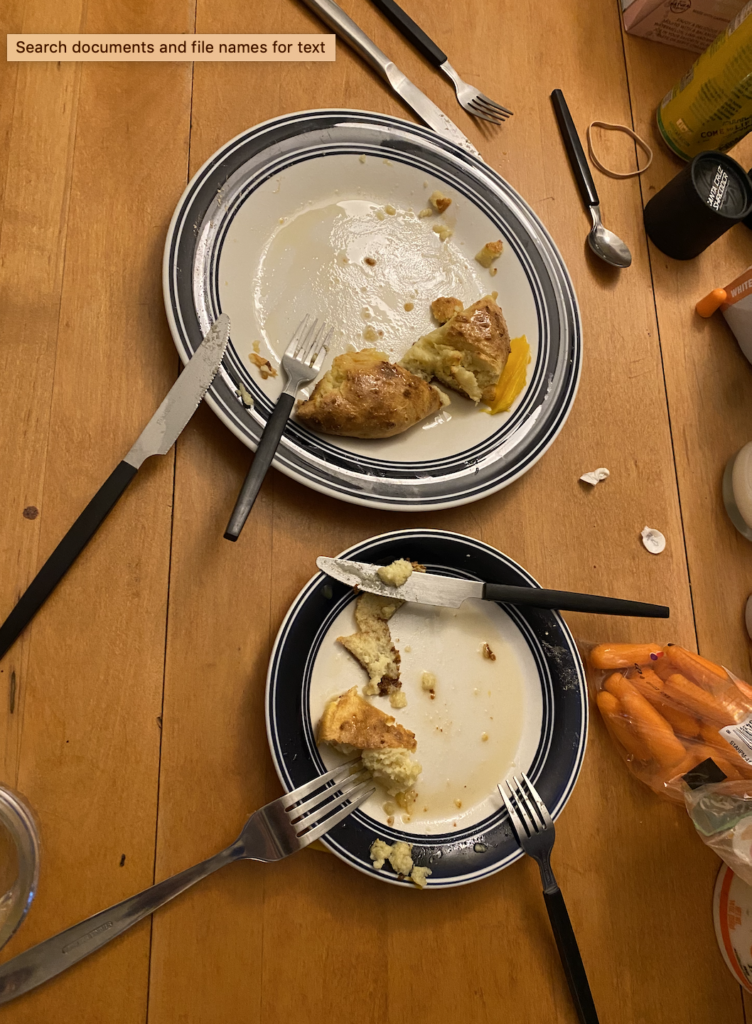
Making Libum: A Roman Cheesecake Popover
April 25th, 2022
By Nate Buchanan with Liam Mears, Nile Bayard, and Macy Brooks
For my second ACTA, several fellow Roman friends and I gathered in our friends apartment to cook a Libum, sometimes referred to as an ancient Roman cheesecake. After a nice dinner and a moderate amount of wine (temperantia is so important after all), we set about making our little taste of ancient Rome. In order to fully appreciate the experience of baking a Libum, we decided to look up a little about the dish. Historically, the dish had many variations and recipes varied across Italy, but Libum was often offered as a sacrifice to the gods (ultimately, we did not due this because we were hungry and the gods are far away). The modern recipe for libum stems from findings in an agronomy book of Marcus Porcio Cato (Cato the Elder) that lists many Roman dishes and recipes, preserving them for us to enjoy today! Thanks Cato!
We brought out the simple ingredients and prepared to make the dish. We mixed our egg and store-bought ricotta cheese (since we didn’t want to hand grind our cheese with a mortal and pestle like they did in olden times) in a bowl. We then slowly added the flour. We lack a sieve to mix the flower in, so we tapped our Roman industria, and made due by using a colander to sift the flour into the mixture. We were uncertain about how much flour to add, but we decided the mixture should feel like dough before we put it in the over so we ended up adding significant flour to balance out the soggy ricotta egg mixture. Then we split our dough into two and had two Libum cakes which we placed in the oven. Though at first it was hard to feel like we were channeling the true spirit of Rome while in our tiny dingy apartment kitchen, we soon realized that maybe it was a good thing our rickety oven was missing a door handle and had no temperature gauge so we had no clue how hot it was. The kind of low-tech cooking operation with this oven was much more similar to a Roman cookfire than a properly functioning oven, and promoted a spirit of frugalitas that made us feel especially Roman! We felt so lucky!





Once the two libum balls looked a nice golden brown, we removed them from the oven. They had split in nice crosses in the middle. One of my friends noted how much it looked like a popover and I wholeheartedly agreed. We doused the two Libum popovers in honey and added some mango for extra sweetness (a modern twist on the dish) and sat down to enjoy. Overall, pretty good! Not much flavor in the cake but the honey was a nice touch and the texture was interesting. While I won’t be making this again for anyone, it was nice to have the experience and see how the ancient Romans ate. This simple dish was quite filling and certainly a fun experience to make with friends.

